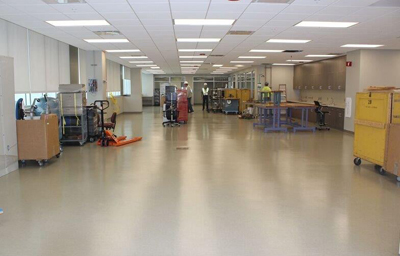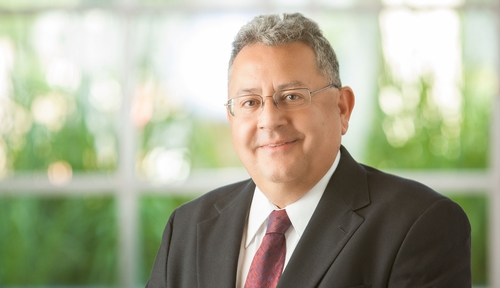Among the orthopaedic surgeons who replace knees and hips throughout the year will be a team of researchers trying to make the world of artificial replacement joints safer, easier, faster, cheaper and better.
 |
The new laboratory space in the Lauritzen Outpatient Center & Fritch Surgery Center is 4,100 square feet. |
Implants, which are advanced technological parts, must be proven to be safe. The lab creates and uses technology to test the mechanics of implants to simulate how the implant would work in humans. It also has contributed to setting standards to verify the long-term safety of an implant prior to regulatory clearance for wide clinical and commercial use.
The location of Dr. Haider’s lab has come full circle. Because of limited campus space and ultimately major growth, it had in 2003 gone from a 2,000-foot space in the Munroe-Meyer Institute to the Scott Technology Transfer and Incubator Center, where some of the hottest technology teams work.
The move will unite the department in the same location.
“This is important and therefore we are really excited that we will be physically in the same place and to have more opportunities for innovation,” said Dr. Haider, a professor of orthopaedic surgery research in the UNMC Department of Orthopaedic Surgery and Rehabilitation and director of the Orthopaedics Biomechanics and Advanced Surgical Technologies Laboratory. “We want to foster more innovation in new implant technology. Collaborating closely with surgeons is vital in this business in order to help patients.
As with any move, it’s been challenging. They’re uprooting dozens of delicate and heavy scientific instruments (some with 50 wires connected to computers) the team built in the Scott Technology Center. And to make the move more economical with minimum damage and disruption, they are doing much of the dismantling and reinstallation themselves.
“The return of our research lab is a catalyst for greater and more frequent groundbreaking research in orthopaedic surgery,” said Kevin Garvin, M.D., professor and chair of the Department of Orthopaedic Surgery and Rehabilitation. “We are all excited to have the research group join us in this world-class facility. Our many thanks go to benefactors Ruth and Bill Scott, who share our vision for continuing to develop the best orthopaedic department possible.”
